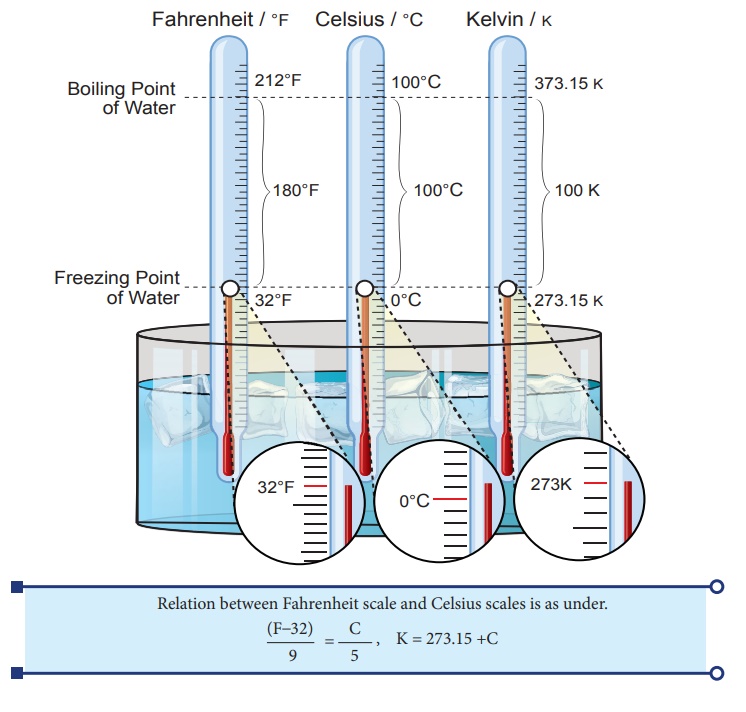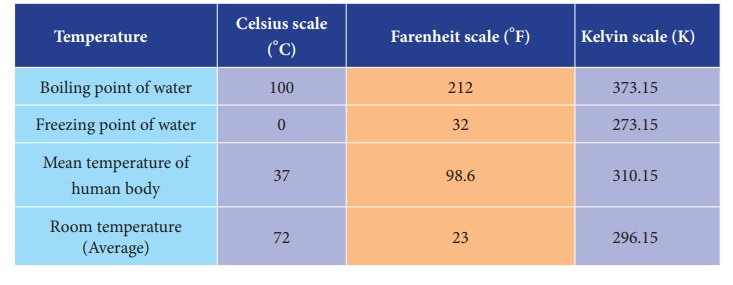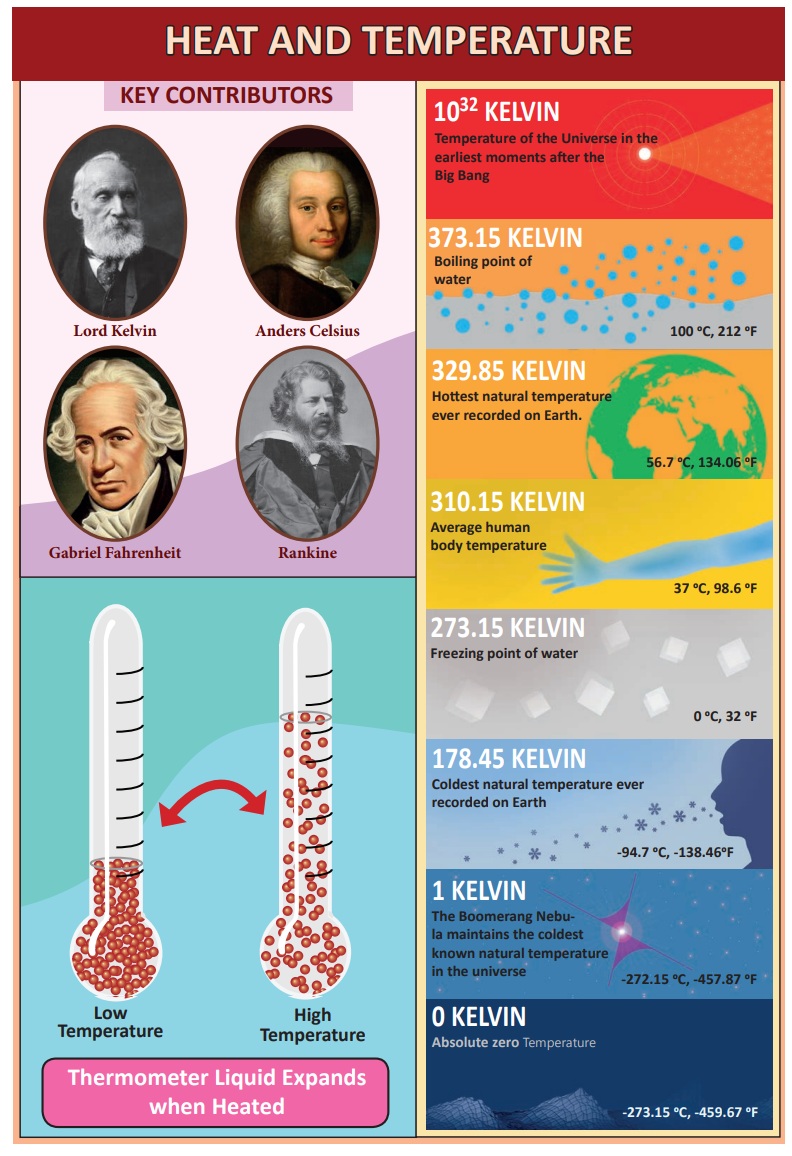Heat and Temperature | Term 2 Unit 1 | 7th Science - Scales of thermometers | 7th Science : Term 2 Unit 1 : Heat and Temperature
Chapter: 7th Science : Term 2 Unit 1 : Heat and Temperature
Scales of thermometers
Scales of
thermometers

Celsius scale
Celsius is the common unit of measuring
temperature, termed after Swedish astronomer, Anders Celsius in 1742,
before that it was known as Centigrade as thermometers using this scale
are calibrated from (Freezing point of water) 0°C to 100°C (boiling point of
water). In Greek, ‘Centium’ means 100 and ‘Gradus’ means steps,
both words make it centigrade and later Celsius.
Fahrenheit Scale
Fahrenheit is a Common unit to measure human body
temperature. It is termed after the name of a German Physicist Daniel
Gabriel Fahrenheit. Freezing point of water is taken as 32°F
and boiling point 212°F. Thermometers with Fahrenheit scale are calibrated from
32°F to 212°F.
Kelvin scale
Kelvin scale is termed after Lord Kelvin.
It is the SI unit of measuring temperature and written as K also known as
absolute scale as it starts from absolute zero temperature.
Temperature in Celsius scale can be easily converted to Fahrenheit and Kelvin scale as discussed ahead
Relation between Fahrenheit scale and Celsius
scales is as under.
(F - 32)/ 9 = C/5
K = 273.15 +C
The equivalence between principal temperature
scales are given in Table for some temperatures.


Most of the people in the world use
the Celsius scale to measure temperature for day to day purpose. The Kelvin
scale has been designed in such a way, it is not only an absolute temperature
scale, but also 1°C change is equal to a 1K change. This makes the conversion
from Celsius to absolute temperature scale (Kelvin scale) easy, just the
addition or subtraction of a constant 273.15
But in United States they prefer to
use the Fahrenheit scale. The problem is, converting Fahrenheit to absolute
scale (Kelvin) is not easy.
To sort out this problem they use
The Rankine scale. It named after the Glasgow University engineer and physicist
Rankine, who proposed it in 1859. It
is an absolute temperature scale, and has the property of having a 1°R change
is equal to a 1°F change. Fahrenheit users who need to work with absolute
temperature can be converted to Rankine by
R= F+ 459.67
Related Topics